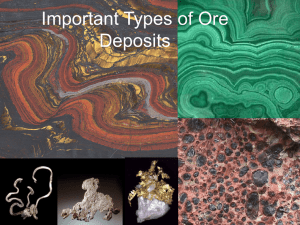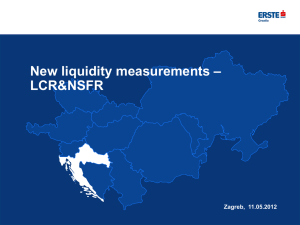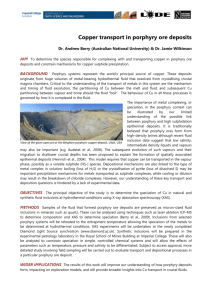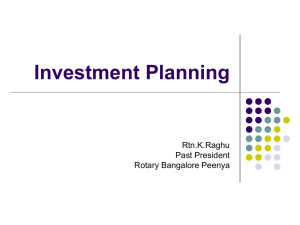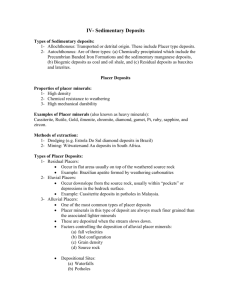File
advertisement
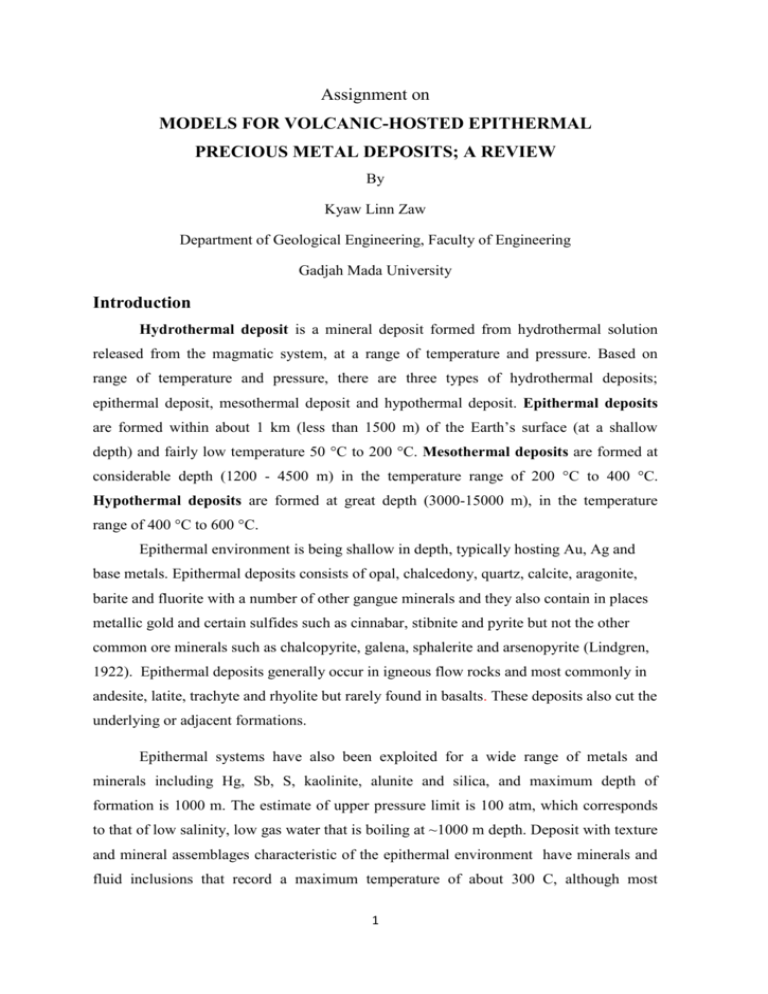
Assignment on MODELS FOR VOLCANIC-HOSTED EPITHERMAL PRECIOUS METAL DEPOSITS; A REVIEW By Kyaw Linn Zaw Department of Geological Engineering, Faculty of Engineering Gadjah Mada University Introduction Hydrothermal deposit is a mineral deposit formed from hydrothermal solution released from the magmatic system, at a range of temperature and pressure. Based on range of temperature and pressure, there are three types of hydrothermal deposits; epithermal deposit, mesothermal deposit and hypothermal deposit. Epithermal deposits are formed within about 1 km (less than 1500 m) of the Earth’s surface (at a shallow depth) and fairly low temperature 50 °C to 200 °C. Mesothermal deposits are formed at considerable depth (1200 - 4500 m) in the temperature range of 200 °C to 400 °C. Hypothermal deposits are formed at great depth (3000-15000 m), in the temperature range of 400 °C to 600 °C. Epithermal environment is being shallow in depth, typically hosting Au, Ag and base metals. Epithermal deposits consists of opal, chalcedony, quartz, calcite, aragonite, barite and fluorite with a number of other gangue minerals and they also contain in places metallic gold and certain sulfides such as cinnabar, stibnite and pyrite but not the other common ore minerals such as chalcopyrite, galena, sphalerite and arsenopyrite (Lindgren, 1922). Epithermal deposits generally occur in igneous flow rocks and most commonly in andesite, latite, trachyte and rhyolite but rarely found in basalts. These deposits also cut the underlying or adjacent formations. Epithermal systems have also been exploited for a wide range of metals and minerals including Hg, Sb, S, kaolinite, alunite and silica, and maximum depth of formation is 1000 m. The estimate of upper pressure limit is 100 atm, which corresponds to that of low salinity, low gas water that is boiling at ~1000 m depth. Deposit with texture and mineral assemblages characteristic of the epithermal environment have minerals and fluid inclusions that record a maximum temperature of about 300 C, although most 1 deposits form in a temperature range about 160 °C to 270 °C (Hedenquist,et.al., 2000). Ore deposition occurs because rapidly ascending fluids quickly change composition within a kilometre of the surface. This change is caused by boiling, the processes that most favours precipitation of bisulfide-complexed metal such as gold. Boiling and rapid cooling result in deposition of gangue minerals as quartz with a colloform texture, adularia and bladed calcite, and the formation of stream-heated waters that create advanced argillic and argillic alteration blankets and halos. Moreover sharp depressurization follows hydraulic fracturing and this also causes the flow of vigorously boiling fluid. The above mentioned conditions results in the deposition of epithermal deposits. Though most of these deposits are found not only in the Tertiary flow but also in some regions of recent volcanism, and that similar veins have been formed during preTertiary out-breaks although erosion has removed most of the older representatives of this type. These deposits are originated partly by mechanical and partly by chemical processes. These deposits are usually formed in fissure veins. Because of the fissuring of the rock near the surface, under slight load, open cavities are abundant and give rise to conspicuous filling, crustification, and comb structure. The vein materials are often frozen to the walls since the walls are likely to be irregular. Splitting, chambering and brecciation are features of the veins. While metasomatic processes have been active in the surrounding rocks the ore is usually confined to open fissures. Short and irregular veins are more frequent than the regularly developed conjugated fractures resulting from strong compressive stress. Divergent systems of fractures are thought to be due to the gravitative setting of volcanic piles. Banding caused by crustification is much more delicate and frequent than in deposits formed at greater depth and higher temperature. Gold and silver are the most important epithermal metal deposits, although base metals are present, their sizes are not economically important. Large bodies of galena and sphalerite occur on some places, but the copper minerals are not abundant. The pyritic deposits are confined to the deeper zones of higher temperatures. Arsenic and antimony, bismuth, tellurium and selenium are common but are rarely of economic importance; quick silver is present in some places. Cobalt and nickel, tungsten and molybdenum are not unknown, but are entirely subordinate especially in the deeper deposits. The pure gold deposits are relatively scare, and those carrying silver only are common in certain regions like Mexico. The usual metals are gold and silver occurring 2 together in varying proportions. Gold and silver can also be found as the native elements in the epithermal deposits. Types of Epithermal deposits The deposits and their relative mineral assemblages are classified as follows: Cinnabar deposits - cinnabar, marcasite, stibnite, hydrocarbons, quartz, opal, calcite Stibnite deposits - stibnite, pyrite and some other sulfides; also quartz Base metal deposits - chalcopyrite, galena, sphalerite, tetrahedrite, abundant quartz, carbonate, fluorite or barite. Principal values usually in gold and silver. Gold deposits - native gold, alloyed with silver. Subordinate argentite, ruby silver, etc., quartz Argentite- gold deposits - argentite, silver selenides, ruby silver, tetrahedrite, etc., native gold, quartz, calcite Argentite deposits - argentite, ruby silver, tetrahedrite, etc,; quartz or calcite, barite and fluorite. Gold-telluride deposits - gold telluride, quartz or quartz and fluorite Gold-telluride deposits with Alunite - gold telluride, gold pyrite, alunite, kaolin. Gold-selenide deposits - gold selenides, pyrite, quartz, and calcite Nature of the Epithermal Environment Two contrasting styles of hydrothermal systems exist within the epithermal environment (Henley and Ellis, 1983) since the two epithermal deposit style of contrasting alteration and ore assemblages form within these two different styles in different volcanic settings as low sulfidation and high sulfidation environments. Although the terms low sulphur and high sulphur refer to the total amount of sulfide minerals in a deposit, the terms low and high sulfidations do not refer to this amount but reflect the oxidation potential and sulphur fugacity of the fluid that deposited sulfide (Barton and Skinner, 1979, Hedenquist et.al. 2000). While low-sulfidation and high-sulfidation deposits 3 typically have low and high sulfide contents, respectively, there are low-sulfidation deposits which are pyrite rich and high-sulfidation deposits which are poor sulfides. Low – Sulfidation System One of these two epithermal environments is low sulfidation system with near neutral pH dilute fluid formed by the entrainment of magmatic components within deep circulating ground waters, reduce sulphur species to H2S (Corbett and Leach, 1998, and Corbett, 2002). In this system, the degree of fluid- rock interaction is rock-dominated (Giggenbach, 1992) and the liquid is typically low salinity (<1-2 wt % NaCl) and may be CO2 and H2S gas rich. Where this liquid discharges at the surface, boiling, neutral-pH springs deposit silica sinter. Steam-heated waters also occur in this environment, formed by condensation of vapour into ground water. This vapour condenses within the vadose zone and forms blankets of sulfate-rich waters. Surface features are associated with the steam-heated zone include steaming ground, mud-volcanoes, and collapse craters in clayaltered ground. Figure (5) Schematically illustration of the various processes deduced for volcanichydrothermal and geothermal system, and the respective environments of highsulfidation and low-sulfidation styles of epithermal ore deposits relative to the intrusive engine. 4 The low sulfidation system deposits precious ± base metal ore in quartz veins by alteration halos. Within low sulfidation deposits the Ag: Au ratio can be different. Some low-sulfidation deposits are Au-rich, having a high base metal content which will increase with increasing depth (Buchanan, 1981 and Hedenquist, 2001). Some low-sulfidation deposits are Au-rich which show crustiform vein textures with dominant chalcedony and are typically hosted by rhyolitic-dacitic rocks that have bimodal character and formed in extensional setting (Sillitoe, 1993). These deposits are formed at shallow depth and low temperature environments. The most common gangue mineral is adularia and illite typically forms an alteration halo. The sulfide minerals as pyrite, pyrrhotite and high Fe sphalerite are minor and selenides are common, however tellurides are common in the alkalic volcanic host rocks. Some low-sulfidation epithermal deposits are Ag-rich deposits which are hosted by andesite-rhyodacite volcanic rocks in arc setting i.e. setting of most porphyry copper deposits. Quartz veins are crystalline, massive and comb textured, and the most common alterations and gangue minerals is sericite whereas adularia is relatively uncommon. Sulfide minerals as pyrite, Fe poor sphalerite, galena, chalcopyrite and tennantitetetrahedrite are common along with Mn carbonates, especially in the base metals-rich varietiy. This sulfide assemblage may represent an intermediate sulfidation state (Hedenquist et.al. 2001). The shallow and deep low-sulfidation systems can be distinguished based on the depth of their formation and associated features. The alteration processes associated with low- sulfidation epithemal system are propylitic, phyllic (illite) and argillic alteration. High - Sulfidation System High-sulfidation system is fluid-dominated system with the composition of the fluid in acidic and oxidized (Hedenquist et.al. 2000). Most of these deposits are generated in extensional to neutral calc-alkaline andesitic-dacitic arcs; although compressive arcs characterized by the suppression volcanic activity can cause a few major deposits while rhyolitic rocks lack appreciable high-sulfidation deposits. In these system, highly acidic fluids form advanced argillic lithocaps which overlies on porphyry system and may host subsequent high-sulfidation mineralization which itself is due to higher pH, moderate to low salinity fluids. The high sulfidation epithermal deposits possess a close connection with the porphyry copper deposits (Sillitoe, 2002). 5 High–sulfidation deposits are characterized by copper (enargite) - gold mineralisation with high contents of S, Se and Te, sometimes Hg. Although the main ore mineral is enargite-luzonite with gold, sometimes with tetrahedrite-tennantite, some deposits have only gold with negligible enargite but some are lack of gold. The distinct features of high-sulfidation deposits are pyrite rich, high-sulfidation state sulphide assemblages; enargite, luzonite, digenite, chalcocite and covellite, and advanced argillic alteration assemblages; quartz, alunite, pyrophyllite and kaolinite/ dickite (Arribas, 1995, Sillitoe, 1999). Another prominent characteristic is the vuggy residual quartz, the product of extreme base leaching and massive to semi-massive sulphide bodies of replacement origin, dominated by exceedingly fine-grained pyrite, melnikovite and marcasite which are in common place and marked principal fluid upflow channels. These vuggy quartz forms erosionally resistant ledges that are typically surrounded by quartz-alunite, quartzpyrophyllite/dickite/kaolinite and argillic assemblages that are originated by the progressive neutralization and cooling of the acidic fluid outwards from the upflow channels. Figure a)Sketch showing the high-sulphidation - porphyry transition, and b) the alteration zones associated with the porphyry system 6 Table. High and low sulfidation deposits characteristics (Hedenquist et al., 2000) Genetically related volcanic rocks Depth of formation Low-sulfidation deposits High-sulfidation deposits Andesite-rhyodacite(AR), bimodal rhyolite-basalt (RB), alkali (A) Andesite-rhyodacite, dominated by calc-alkaline magma Shallow 0-300m Setting, typical host rock Domes; pyroclastic and sedimentary rocks Deposit form Vein , vein swarm, stockwork, disseminated Fine bands, combs, crustiform, breccia Alunite-kaolinite blanket, clay halo Chalcedony-adularia-illitecalcite Ore textures Alteration Gangue Sulfides Metals Notable features Fluids Examples Cinnabar, stibnite; pyrite/marcasite-arsenopyrite, Au-Ag selenites, Se sulfosalts, Pyrrhotite, Fe – rich sphalerite (RB) Au-Ag-As-Sb-Se-Hg-Ti (RB), low Ag:Au; <0.1-1.0% base metal Sinter, chalcedony blanket <1% NaCl, gas rich, <220 °C (rb) McLaughlin, Midas, Round Mountain, Sleeper, Hishikari (low sulfidation) Deep 300-800m Rarely>1000m Domes, diatremes(AR,A); pyroclastic and sedimentary rocks Vein ,breccias body, disseminated Coarse bands Clays,sericite, carbonates; roscoellite,fluorite(A) Quartz-carbonate-rhodonitesericiteadularia±barite±anhydrite±hemati te±chlorite (AR) Pyrite-Au-Ag sulfides/sulfosalts, variable sphalerite, galena, chalcopyrite, tetrahedrite/tennantite (AR) Shallow <500m Intermediate 500-1000m Deep >1000m Dones, central vent; pyroclastic and sedimentary rocks Disseminated, breccias and veinlet Vuggy quartz hosts replacement Silicic (vuggy), quatzalunite Alunite, barite, kaolinite Domes, diatremes; volcanic rocks Enargite/Luzonite, covellite, pyrite Enargite, luzonite, Chalcopyrite, tetrahedrite/tennantite, sphalerite, late covellite, pyrite Cu-Au-Ag-Bi-Te-Sn Bornite, digenite, chalcocite, covellite Steam – heated blanket Vuggy quartz host Overprinted on porphyry features Massive sulfide vein, breccias, ledges Massive sulfide late veins/ breccia Silicic (vuggy), quatz-alunite, pyrophyllite-dickite-sericite Anhydrite, Kaolinite, dickite Domes, diatremes; porphyry, volcanic, clastic sedimentay rocks Dissemination, veinlets, breccias Replacement Pyrophyllite-sericite, quartzsericite Sericite, Pyrophyllite Ag-Au-Pb-Zn, Ba, Mn, Se, (AR), high Ag:Au; 2-10 (20+)% base metal Some intermediate sulfidation – state veins adjacent to high sulfidation ore 3-10+% NaCl, 220-280 °C+ (AR) Au-Ag, Cu leached (Hg overprint) <2wt%NaCl 4-15+wt%NaCl variable Comstock, Tonopah, Creede, Fresnillo, Casapalca, Victoria (intermediate sulfidation state) Yanacocha, Publo Viejo, Pierina, Lacoipa, Tambo, Pascua, Paradise peak, Summitville, Rodalquilar, Kasuga Ei Indio, Pepanto, Chinkuashih, Goldfield, Lahoca Bisbee, MM, Chuquicamata 7 Cu-Au High-sulfidation deposits comprise all or part of lithocaps, extensive zones of advanced argillic and argillic alteration which originated between the subvolcanic intrusive environments and the paleosurface. In the porphyry environment, high-sulfidation mineralization occurs in the roots of lithocaps, however deep or shallow epithermal mineralization emplaced at depths shallower intrusion through to the paleosurface. Depending on the depth where high-sulfidation mineralization occur, the high-sulfidation deposits can also be grouped as shallow, intermediate and deep classes, and their related significant characteristic as depth of formation, typical host rocks, alteration mineral assemblages, gangue mineral assemblages and ore minerals formed in specific environments are represented in (Table). Alkalic Model Although seven major gold deposits in the world occur in alkali rocks only a few authors have proposed models for epithermal, volcanic hosted precious metal deposits which incorporate an alkalic or gold telluride model. Figure shows a schematic model of an alkali precious mineral deposit. Precious metal deposits of the alkalic type are associated with syenites, trachytes, phonolites and shoshonitic volcanic rocks. They can occur in a variety of volcanic settings including maar-diatreme complexes. 8 Regional or district alteration is porphyritic. Veins and mineralized stockworks and breccias are characterized by quartz-carbonate-roscoelite-fluorite-adularia alteration which forms a narrow alteration halo around the mineralized structures. The characteristic ore minerals in these deposits are Au-Ag tellurites, micro-gold in pyrite, minor base metal sulphides, and in some deposits cinnabar and stibnite. Mutschler and others (1984) suggest that the gold telluride deposits in alkaline volcanic rocks may grade downward into alkali porphyry copper-precious metal deposits. Au-Ag tellurides are also common in high-sulfur systems and can occur in low sulfur deposits. Veins, sheeted zones, and hydrothermal breccias as shown in figure..... are the main types of mineralized structures present in these deposits. Mutschler, et al., (1984) suggest a series of chemical criteria of recognition of areas of alkaline rocks which have good potential for the occurrence of precious metal deposits. These include: wt.% SiO2>45 unless wt.%CO2>50, wt.%Na2O+K2O>8.0, wt.%Na2O/K2O<1.0, wt.%Fe2O3>1.7 FeO; Au>10 ppb and local anomalies in Ag, As, Bi, Hg, La, Mo, Nb, Pb, Sb, Te, Ti, U and V. Conclusion Epithermal ore deposit is one of the hydrothermal systems which can also be related with the porphyry system. The low-sulfidation and high-sulfidation system are the two common deposit types which are distinguished based on the oxidation capacity and the acidity of the hydrothermal system. Low-sulfidation system mostly occurs in the environment of near neutral pH state and high-sulfidation system occupies in the environment mostly proximal to the porphyry stem. The low sulfur systems contain a distinct alteration and ore mineral assemblage. The gangue and alteration minerals are characterized by the occurrence of adularia, quartz, carbonates, including manganese carbonate, and in some deposits, manganese silicates, and fluorite. Adularia is a characteristic gangue and alteration mineral in low sulfur systems. It does not occur in high sulfur systems, but does occur in alkalic deposits. Telluride minerals are rare as are hypogene sulfates. Several subtypes of the low sulfur model can be distinguished based upon gold/silver ratios and the amount and kind of base metals present. The low sulfur systems may show the temporal and spatial association with rhyolitic volcanism of calc alkalic or alkali-calcic 9 type. In some deposits, there is also clear genetic link with the rhyolitic volcanism, while in other the genesis of the metal and sulfur in the deposits is obscure. High-sulfur of enargite precious metal deposits form a very distinct group of deposits characterized by the occurrence of advanced argillic alteration and the presence of enargite-luzonite group minerals. The advanced argillic assemblages are characterized by the present, in various combinations, of alunite, kaolinite, pyrophyllite, native sulfur, diaspore, quartz, zunyite, and barite, in strongly silicified zones enveloped by extensive areas of argillic and porphyritic alteration. The ore minerals, except for pyrite are largely restricted to silicified zones and veins. Au-Ag tellurides are usually present but seldom in major amounts. A clear spatial and temporal association with andesitic to rhyodacitic volcanism is present in nearly all high-sulfur deposits. The alkali deposits form a distinct group hosted by trachytes, phonolites, syenites and shoshonitic volcanic rocks. Alteration assemblages are characterized by the occurrence of quartz, adularia, fluorite, roscoelite and carbonate. Fluorite is invariably present and roscoelite, a vanadium mica, is present in many alkalic gold deposits. The alkali, epithermal precious metal, systems are, typically, low in total sulfur. Mustchler, et al., (1984) have suggested that these systems are the upper volcanic portions of alkali porphyry copper systems. It seems clearly that there is a genetic tie between alkali magmatism and the precious metal deposits hosted by alkali volcanic rocks. References Arribas, A. Jr., 1995, Characteristic of High-Sulfidation Epithermal Deposits, and their Relation to Magmatic Fluid, in Thompson, J. F. H., ed., Magmas Fluid and Ore Deposits: Mineralogical Association of Canada Short Series, v. 23, p. 419-454 Barton, P.B., Jr.,and Skinner, B.J.,1979, Sulphide Minerals Stabilities, in Barnes, H.L., ed., Geochemistry of Hydrothermal Ore Deposits: p. 278-403 Bonham, H. F., Jr., 1984, Three major types of epithermal precious-metal deposits: Abstract with programs, The geological Society of America, annual meeting, vol. 16, no. 6, p.449. 10 Bonham, H. F., Jr., 1986, Models for volcanic-hosted epithermal precious metal deposits: a review, The international volcanological congress, Newzeland. Buchanan, L. J., 1981, Precious metal deposits associated with volcanic environments in the southwest: in relation of tectonics to ore deposits in the southern Cordillera, Dickison, W.R., and Payne, W.D., editors, Arizona Geological Society digest, vol. 14. Corbett, G. J., and Leach, T.M., 1996, South West Pacific Rim Gold-Copper: Structure, Alteration, and Mineralization Workshop Minual Jakarta, Indonesia. Corbett, G. J., 2001, Styles of Pacific Rim Epithermal Gold Mineralization, Lima Peru, Preceeding CD. Giggenbach, W.F., 1992, Magma Degassing and Mineral Deposition in Hydrothermal System Along Convergent Plate Boundary: Economic Geology, v. 87, p. 1927-1944. Lindgren, W, 1922, A Suggestion for the Terminology of Certain Mineral Deposits: Economic Geology, v. 17, p. 292-294 Hedenquist, J. W., Arribas, A., Jr and Gonzales- Urien, E., 2000, Exploration for Epithermal Gold Deposits: Review in Economic Geology, v. 13, p. 245-277. Hedenquist, J.W., 2001, Relationship between porphyry and high-sulfidation epithermal deposits: lectures with a field trip to ore deposits in the Cajamarca region, Per˙, following ProExplo Congreso. Mutschler, F.E., Griffin, M.E., Stevens, D.S., and Shannon, S.S.Jr., 1984, Precious metal deposits related to alkaline igneous rocks in the North America cordillera: Abstract with programs, Geological Society of America annual meeting, vol. 16, no.6. p.606. Sillitoe, R.H., 1993, Epithermal Models: Genetic Types, Geometrical Controls and Shallow Features; in Kirkham, R.V., Sinclair, W.D., Thorpe, R.I., and Duke, J.M., eds., Mineral Deposit Modeling: Geological Association of Canada, Special Paper 40, p. 403-417. 11



